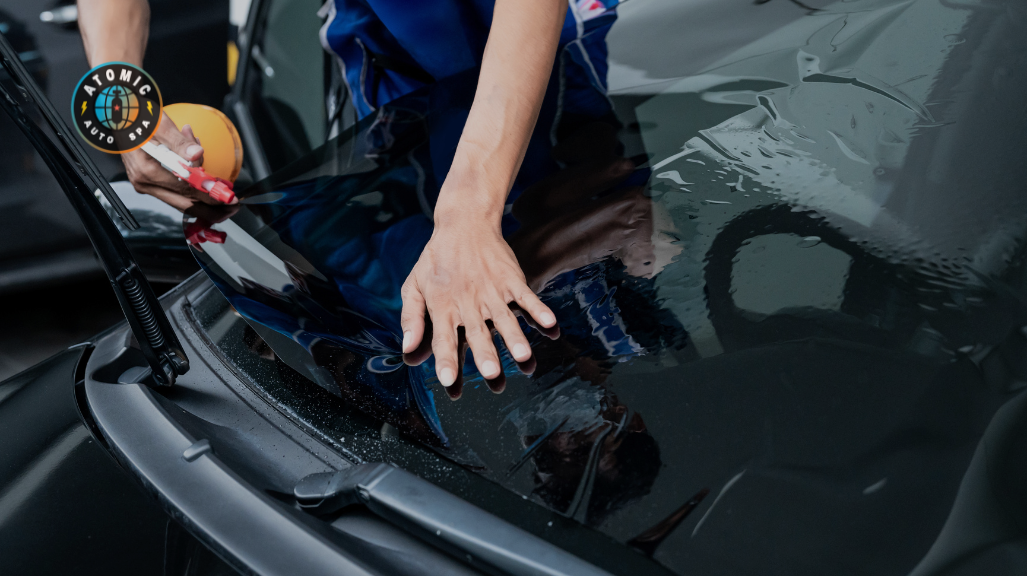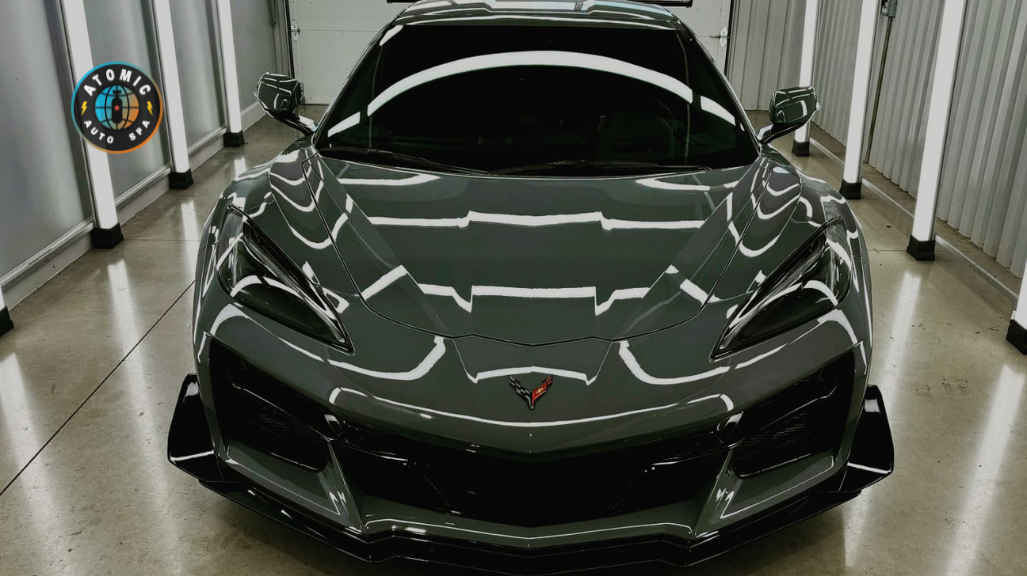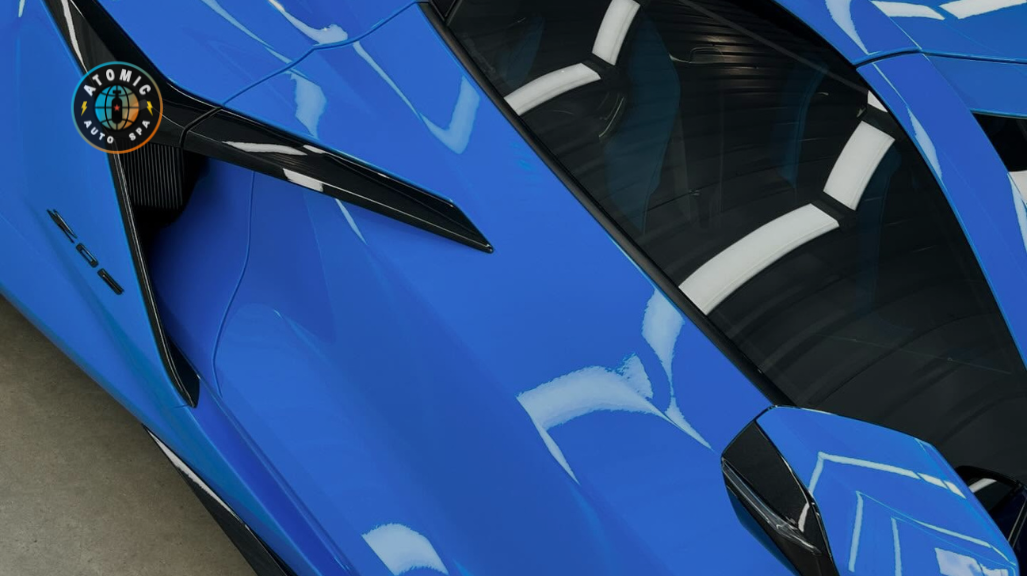How to Choose the Right Shade for Your Car Tint: A Comprehensive Guide
Choosing the right car tint shade in Round Rock, TX goes beyond aesthetics—it affects privacy, comfort, and legal compliance. At Atomic Auto Spa, we specialize in providing high-quality tint solutions tailored to your vehicle's needs. Whether you want to enhance your vehicle's style, reduce glare, or block harmful UV rays, selecting the perfect tint requires careful consideration.
This guide will help you navigate the factors involved in making an informed decision for your car.
Key Takeaways
Understand different window tint shades and their impact on privacy and glare reduction.
Consider state-specific tint laws to avoid fines and compliance issues.
Evaluate tints based on UV protection and heat reduction to improve driving comfort.
Compare different tint film materials—ceramic, metalized, or dyed—based on budget and longevity.
Balance aesthetic appeal and functionality to enhance your vehicle's look and performance.
Understanding Car Tint Shades
Choosing the right window tint shade requires understanding how different window tints impact visibility, heat rejection, and privacy. Window tinting serves both functional and aesthetic purposes, making choosing a film that meets your specific needs is important.
Types of Window Tint Films
There are several types of tint films, each with its benefits and drawbacks:
Dyed Window Tint – An affordable option that provides essential privacy and glare reduction. However, it may fade over time.
Metalized Window Tint – Contains metallic particles that enhance heat rejection compared to dyed tint but can interfere with electronic signals.
Hybrid Tint – A combination of dyed and metalized tint that balances heat reduction, privacy, and durability.
Carbon Tint – Offers UV protection, blocking harmful UV rays while reducing interior fading without signal interference.
Ceramic Window Tint – The best option for maximum UV protection, heat rejection, and nighttime visibility without affecting electronic devices. Ceramic tints are known for their durability and superior performance.
Understanding these different tint film options helps you choose the right window tint for your needs.
When selecting a car tint, it’s essential to understand the different car tint shades available. Tint shades range from lighter to darker ones, serving multiple purposes, including privacy enhancement, glare reduction, and heat rejection.
Additionally, tint color affects how visible light is absorbed or reflected. For example, a gray tint provides a neutral appearance that complements most vehicle colors, while bronze or green tints can offer better heat rejection in hot climates.
|
Tint Shade |
Privacy Level |
Heat Rejection Compared |
Glare Reduction |
|---|---|---|---|
|
50% (Light) |
Low |
Low |
Minimal |
|
35% (Moderate) |
Moderate |
Moderate |
Good |
|
20% (Dark) |
High |
High |
Excellent |
|
5% (Limo Tint) |
Maximum |
Very High |
Maximum |
Legal Considerations
Before selecting a window tint shade, knowing local laws governing visible light transmission (VLT) is crucial. Legal tint limits vary by state and dictate how much visible light must pass through your vehicle’s windows, especially when considering dark tints.
Factors to Consider:
Front Side Windows – Many states require a minimum VLT percentage for driver and passenger windows.
Rear Windows – Some states allow darker tint shades, while others enforce restrictions.
Windshield Tinting – The darkest legal tint for windshields is typically a tinted strip along the top portion.
Medical Exemptions – Drivers with conditions such as skin cancer may qualify for exemptions allowing darker tints.
Always check your state’s legal tint limit before installation to avoid penalties.
Tint laws vary by state, so compliance with state-specific tint regulations is essential to avoid fines or legal issues. Visible Light Transmission (VLT) percentages dictate how much light can pass through your vehicle's windows, and these limits differ for windshields, front side windows, and rear windows.
Check your local laws before choosing the right window tint shade.
Non-compliance may lead to fines and mandatory tint removal.
Medical exemptions exist in some states for individuals with skin cancer or light-sensitive conditions.
Evaluating Sun Protection
A major reason people choose tinted windows is to protect themselves and their vehicles from harmful UV rays. Window films serve as a barrier against excessive sun exposure and heat reduction, keeping your car cooler and prolonging the life of its interior.
Benefits of UV Protection & Heat Rejection:
Blocks UV Rays – High-quality tint can block up to 99% of UV rays, reducing the risk of skin cancer.
Prevents Sun Damage – Blocking UV rays protects your car’s interior, preventing fading and cracking.
Enhances Comfort – Heat rejection compared to untinted windows is significantly better, reducing interior temperatures.
Reduces Glare – Minimizes eye strain and improves visibility during bright conditions.
For maximum UV protection, consider ceramic window tint, which provides superior heat rejection without compromising nighttime visibility.
A high-quality window tint should provide maximum UV protection, heat reduction, and glare minimization to ensure a comfortable and safe driving experience.
|
Feature |
Benefit |
|
Blocking harmful UV rays |
Prevents skin damage and reduces risk of skin cancer. |
|
Heat Reduction |
Lowers interior temperature, reducing the need to block heat with AC. |
|
Glare Minimization |
Improves nighttime visibility and overall driving safety. |
Privacy & Security
Your tinted windows affect privacy and security, especially for valuables left inside your vehicle. Darker windows provide more privacy but may be subject to local laws regarding the darkest legal tint.
|
Tint Darkness Level |
Privacy Enhancement |
Visibility from Outside |
|
50% |
Low |
High |
|
35% |
Moderate |
Medium |
|
20% |
High |
Low |
|
5% (Limo Tint) |
Maximum |
Minimal |
Aesthetic Preferences
Tinting isn’t just about function—it’s about enhancing your car’s sleek appearance. When selecting the right tint, consider:
How it complements your car’s paint color.
The overall visual appeal of darker tint shades vs. lighter tints is offered.
The modern vs. classic look different shades provide.
If you're interested in custom tint applications, check out our auto spa services for additional customization options.
Heat Reduction & Energy Efficiency
How Window Tinting Keeps Your Car Cooler
Installing high-quality window tint can make all the difference in maintaining a comfortable driving environment, especially in hot climates. Darker tints provide better insulation by blocking UV rays and reducing heat absorption.
Energy Efficiency Benefits
Reduces AC Usage – Lower interior temperatures reduce strain on your vehicle’s cooling system, leading to improved fuel efficiency.
Saves Energy Costs – Less need for climate control means lower fuel consumption and savings over time.
Protects Interior Materials – Tinted windows prevent your car’s interior from overheating, preserving upholstery, dashboard, and electronics.
Choosing the right shade of ceramic tint is recommended to ensure heat reduction without affecting nighttime visibility.
Protecting Your Vehicle's Interior from Sun Damage
Excessive sun exposure can cause sun damage to your car's dashboard, seats, and other interior elements. High-quality films help protect these components by blocking UV rays, prolonging the lifespan of your car's interior materials. Without tint, leather and upholstery may deteriorate quickly, reducing your vehicle’s resale value.
Improving Fuel Efficiency
By reducing interior heat buildup, window tinting serves to lessen the reliance on air conditioning, which in turn improves your car's fuel efficiency. A cooler cabin reduces strain on your vehicle’s cooling system, resulting in long-term cost savings on fuel consumption.
For maximum heat rejection, explore our ceramic coating packages that complement tinted windows.
|
Tint Type |
Heat Rejection Compared |
Best Use Case |
|
Ceramic Window Tint |
Maximum |
Best for extreme heat protection |
|
Metallized |
High |
Reduces glare & strengthens windows |
|
Dyed |
Moderate |
Budget-friendly & aesthetic appeal |
Selecting a Professional Installation Service
Importance of Professional Installation
While DIY kits exist, professional installation ensures long-lasting, bubble-free results. High-quality tint films require precision application for maximum UV protection and heat rejection.
What to Look for in a Tint Installer
Certified Professionals – A reputable installer will use high-quality tint films and follow local laws.
Warranty Options – Look for warranties on materials and labor to protect your investment.
Custom Tinting Services – Ensure the shop offers window tinting services tailored to your needs.
Choosing the Right Window Tint Film
Not all window film is created equal. Consider factors like tint percentage, durability, and UV protection when selecting a tint. High-quality tint films resist fading, bubbling, and peeling over time, ensuring your investment lasts for years.
DIY vs. Professional Installation
While some car owners attempt to install tints for their cars, professional installation guarantees precise application without reduced visibility, peeling, or misalignment. DIY applications can lead to legal issues if the tint darkness exceeds the legal tint limit.
Choose an experienced professional installation service for your window tinting services to ensure precision and durability. Atomic Auto Spa provides high-quality installations that adhere to local laws and guarantee long-lasting performance.
Frequently Asked Questions
-
The best tint percentage depends on your priorities—35% tint is a popular choice for balancing privacy and visibility, while 20% or lower provides enhanced privacy but may reduce visibility at night.
-
Yes! Ceramic window tint offers superior heat rejection, UV protection, and durability compared to traditional dyed or metallized tints. It does not interfere with electronic signals and provides a sleek appearance.
-
Darker tints reduce visibility at night, so choosing a lighter tint or a ceramic tint with high heat rejection and UV protection can provide benefits without compromising nighttime visibility.
-
High-quality tint film can last 5-10 years with proper care. Professional installation and regular maintenance help maximize its lifespan.
-
Yes! If you want to upgrade to a darker tint or switch to high-quality tint films, old tints can be removed professionally without damaging your vehicle's windows.
Final Thoughts on Choosing the Right Car Tint
Your right window tint isn't just a style choice—it’s an investment in comfort, safety, and efficiency. You’ll enjoy reduced heat, increased privacy, and enhanced aesthetics by choosing the right shade. To ensure top-quality results, trust a professional installer like Atomic Auto Spa to get the job done right.
Ready to upgrade your car tint? Schedule a consultation with our experts today!




